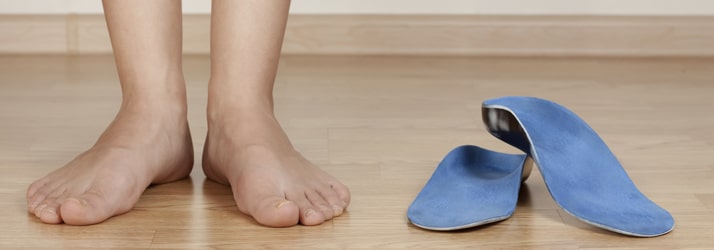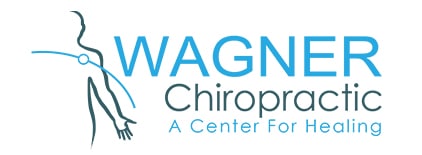Short Leg Syndrome Is Easy To Treat But Hard To Fix in Eustis

Short leg syndrome or “leg length inequality” refers to a difference in leg lengths resulting in chronic leg, knee, hip and back pain. Different leg lengths tend to tilt the pelvis down on one side which puts undue stress on the muscles and spine. The asymmetry between both legs can subtly change a person’s gait, altering the forces acting on the legs as a person walks or runs.
If you have one foot or hand larger than the other or you notice one side of your face is slightly different than the other, you know that most humans are not perfectly symmetrical. As much as 70% of the population also has legs that are slightly different in length. Most often, the discrepancy is quite small (less than half an inch) and this difference is not enough to significantly impact your health, however a study published in the Journal of Chiropractic and Osteopathy in 2005(4) suggests that about 20% of people may have a leg length inequality of one centimeter (0.4 inch) or more.
There are two types of short leg syndrome: anatomical/structural and functional.
Anatomical short leg is diagnosed when one leg is longer and can be corrected with a heel lift in a custom-made orthotic for the shoe of the short leg created after a series of X-ray measurements. It is very rare.
A structural short leg is anatomically short because of a hip disorder, less knee joint space, or history of fracture. This type of short leg length is also well managed with chiropractic adjustment and custom-made orthotics with heel lifts (see preceding paragraph).
Structural or anatomical short leg syndrome can occur in childhood as a result of an injury, infection or a difference in growth rates between the legs. Adults can also develop an inequality as a result of surgery with hip replacement being an example.
Functional short leg is different from structural short leg. Here a patient often presents with low back pain, right- or left-sided in the sacroiliac joint (1). Most often, the right leg is the one that is functionally short. A functionally short leg is apparently short because of postural or environmental stress such as tighter muscles on one side of the body or a fallen arch in the foot.
Two scientific studies(4) have found that participants who had a limb length inequality of two centimeters (0.8 inch) or more were more likely to develop osteoarthritis in the knee. In addition, the findings show these participants were also slightly more likely to develop osteoarthritis in the hip.
Leg, knee, hip or back pain may be signaling the possibility of short leg syndrome for you. This can be difficult to detect on your own so it’s wise to visit your chiropractor who may also take an X-ray which is a very accurate and reliable method of measurement.
When we initially suspect functionally short leg length, a patient who comes to us at Wagner Chiropractic in Eustis will stand on and be weighed by a foot scanner to measure the weight imbalances of each leg. The patient will be heavier on the short leg side since the patient is naturally forced to lean into that side to maintain balance. We typically find a weight discrepancy between right and left.
A functional short leg syndrome is easy to treat but hard to fix. At Wagner Chiropractic we successfully manage functional short leg syndrome using chiropractic lumbar and pelvic adjustment. Most patients return for regular visits to even out their pelvis and low back from functional short leg to slow down wear and tear of their knees, hips and low back.
Call us today to get a complimentary assessment of your spine, pelvis, and weight imbalances.
- denoting the rigid joint at the back of the pelvis between the sacrum (2) and the ilium (3)
- a triangular bone in the lower back formed from fused vertebrae and situated between the two hipbones of the pelvis
- the large broad bone forming the upper part of each half of the pelvis
- Golightly, PT, MS, et al. “Relationship of Limb Length Inequality with Radiographic Knee and Hip Osteoarthritis.” Health and Human Services Public Access, U.S. National Library of Medicine, 22 Feb. 2007, https://www.ncbi.nlm.nih.gov/pmc/articles/PMC2836720
- Harvey, William F., et al. “Association of Leg-Length Inequality With Knee Osteoarthritis: A Cohort Study.” Annals of Internal Medicine, American College of Physicians, 2 Mar. 2010, annals.org/aim/article-abstract/745634/association-leg-length-inequality-knee-osteoarthritis-cohort-study?volume=152&issue=5&page=287.
- Knutson, Gary. “Anatomic and functional leg-length inequality: A review and recommendation for clinical decision-making. Part I, anatomic leg-length inequality: prevalence, magnitude, effects and clinical significance.” Chiropractic and Osteopathy, U. S. National Library of Medicine, 20 July 2005, https://www.ncbi.nlm.nih.gov/pmc/articles/PMC1232860
Endnotes:
Vogel, J. R. “Short-Leg Syndrome.” Current Neurology and Neuroscience Reports., U.S. National Library of Medicine, Dec. 1984, www.ncbi.nlm.nih.gov/pubmed/6536410.
Golightly, PT, MS, et al. “Relationship of Limb Length Inequality with Radiographic Knee and Hip Osteoarthritis.” Health and Human Services Public Access, U.S. National Library of Medicine, 22 Feb. 2007, https://www.ncbi.nlm.nih.gov/pmc/articles/PMC2836720
Harvey, William F., et al. “Association of Leg-Length Inequality With Knee Osteoarthritis: A Cohort Study.” Annals of Internal Medicine, American College of Physicians, 2 Mar. 2010, annals.org/aim/article-abstract/745634/association-leg-length-inequality-knee-osteoarthritis-cohort-study?volume=152&issue=5&page=287.
OFFICE HOURS
Monday
7:15am - 4:30pm
Tuesday
7:15am - 4:30pm
Wednesday
Closed
Thursday
7:15am - 4:30pm
Friday
7:15am - 3:30pm
Saturday
Closed
Wagner Chiropractic
2775 South Bay Street
Eustis, FL 32726
(352) 589-5443



